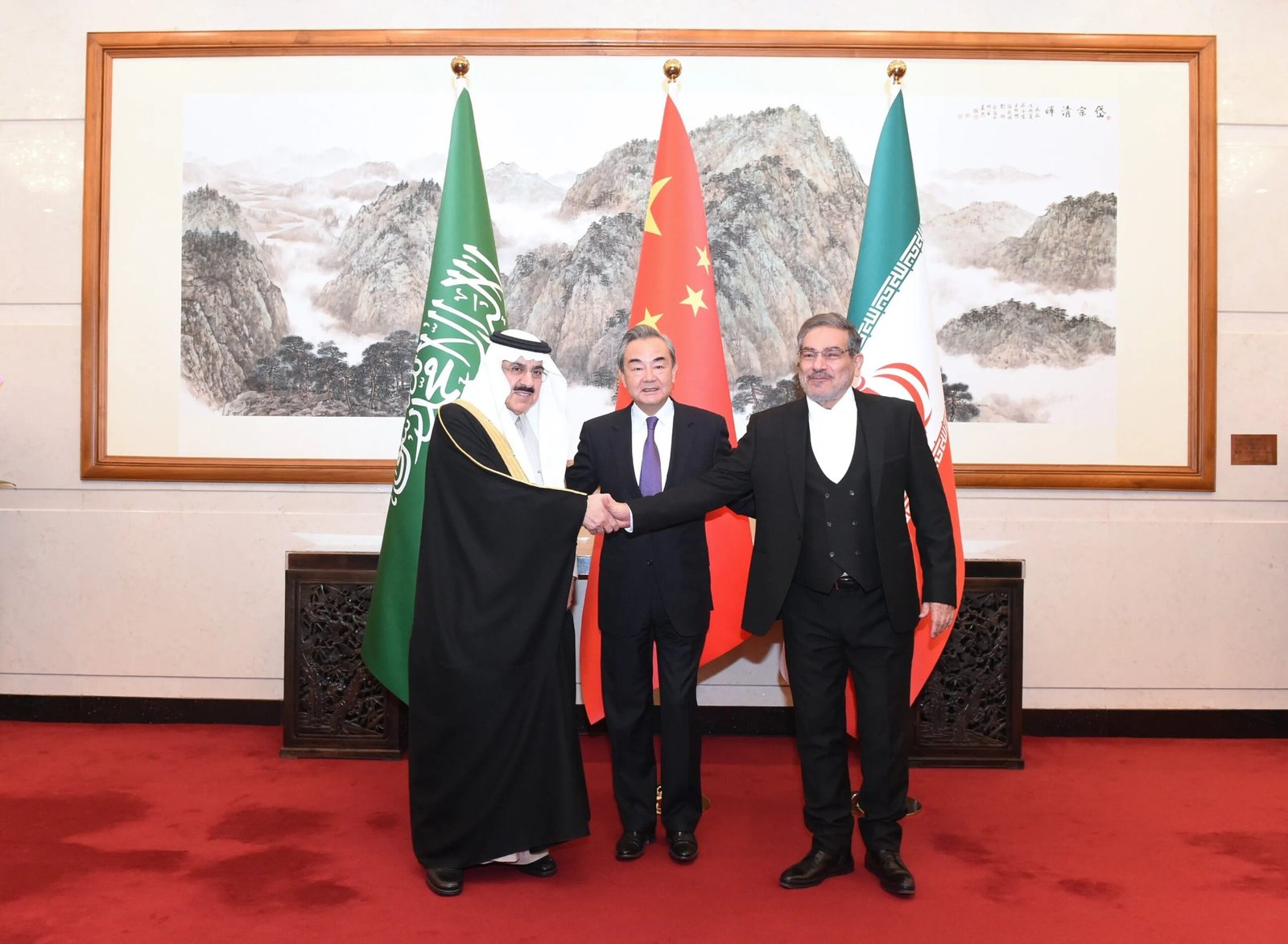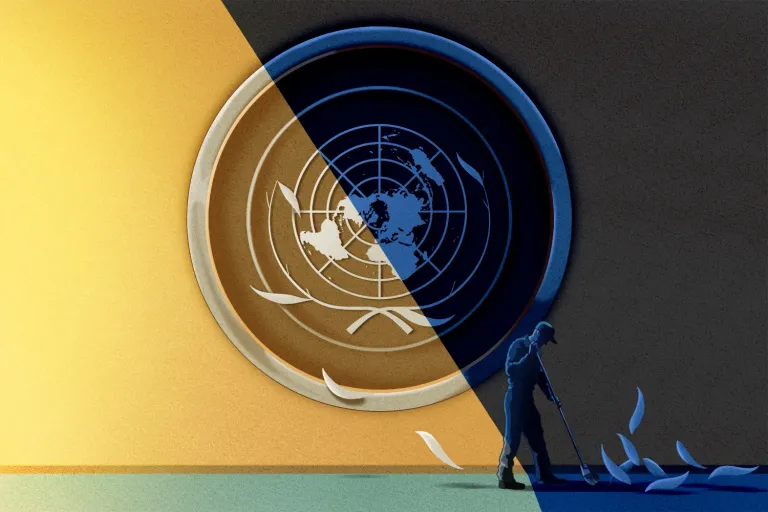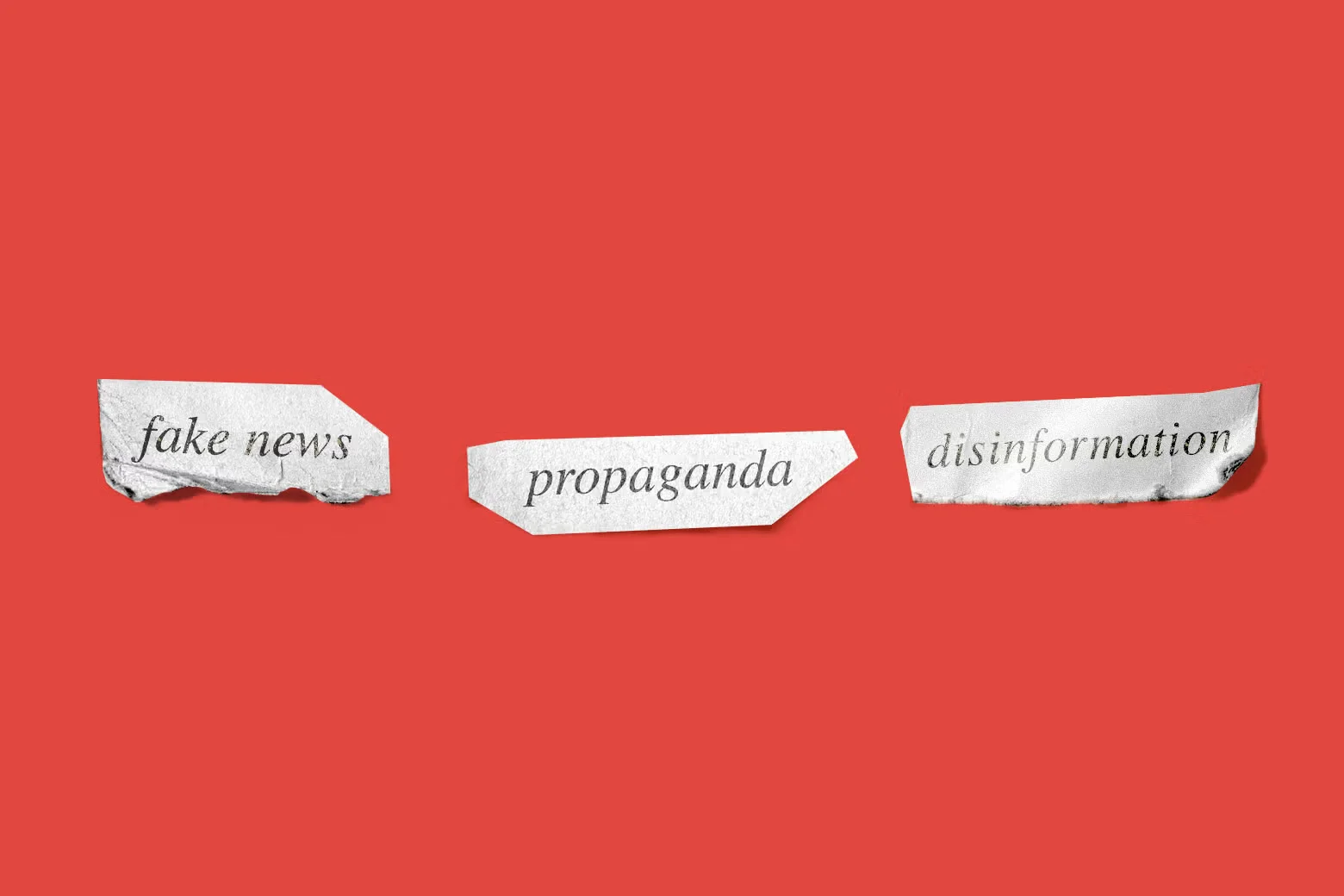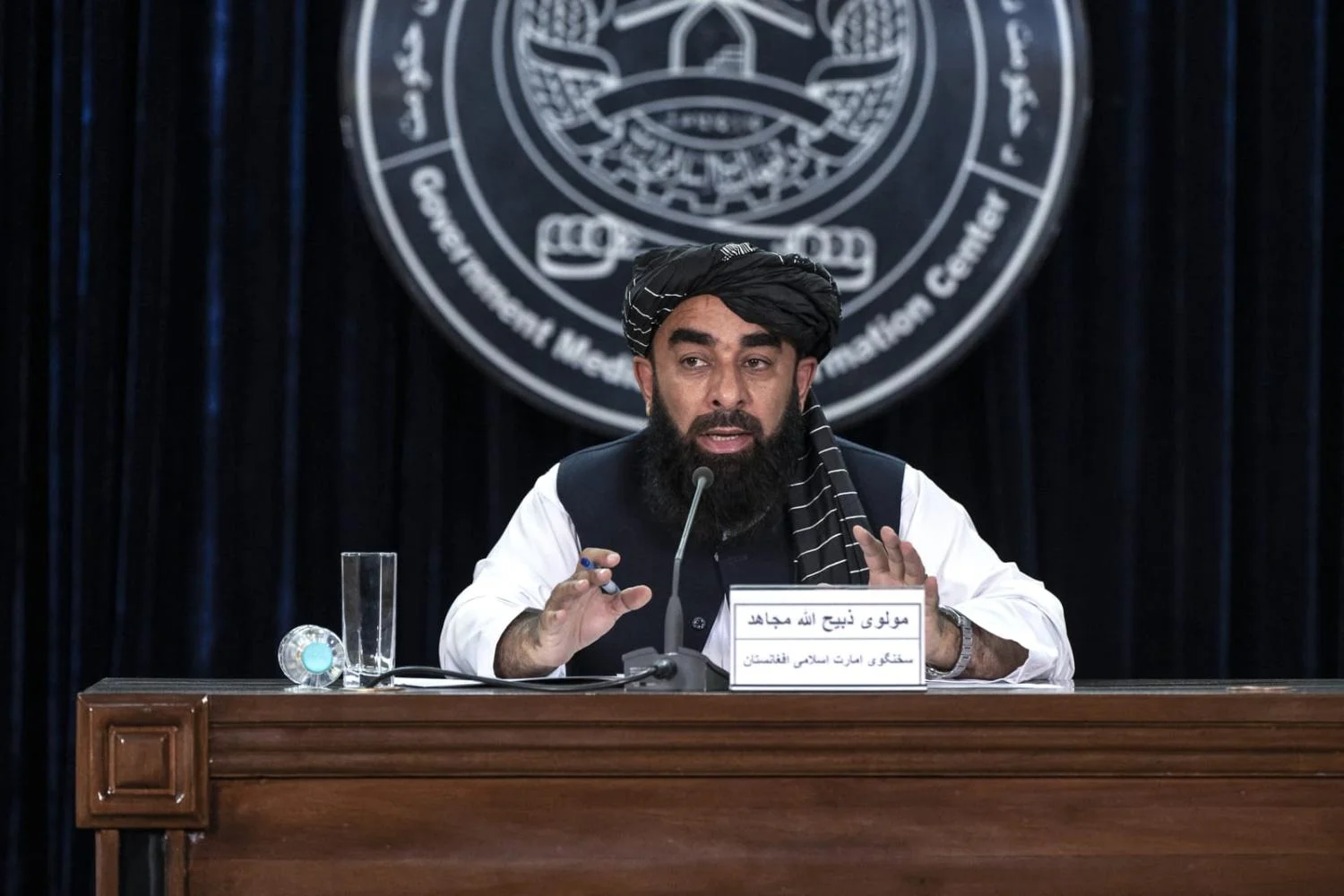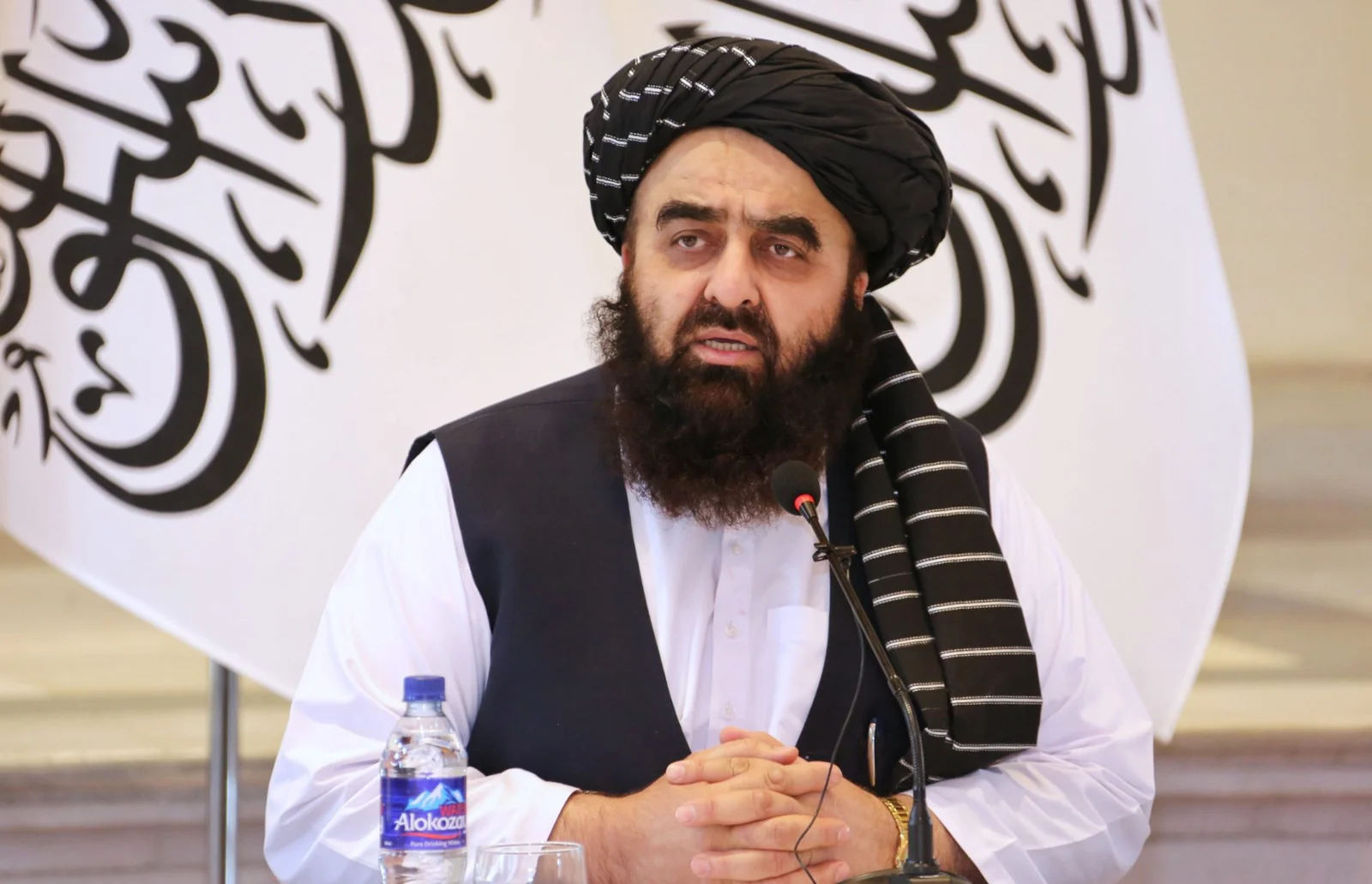Relations between Iran and Saudi Arabia entered a new phase after 1979. Even before the revolution, the Persian-Arab divide was prevalent. After the Iranian Revolution, religious and ideological aspects became more prominent. In both the Middle East and West Asia, Iran and Saudi Arabia remained in opposing camps. They particularly clashed over Iraq and Afghanistan. Reports and media coverage indicate that Saudi Arabia supported Saddam Hussein and the Taliban. In contrast, Iran confronted both entities directly.
With the onset of the 21st century, proxy wars between the two states began unfolding across various Middle Eastern countries. These conflicts intensified after the Arab Spring of 2011. Saudi Arabia, wary of potential spillover effects, viewed the unrest with concern. Iran, on the other hand, referred to the 2011 Arab unrest as the “Islamic Awakening.” Relations between the two countries eventually worsened after Saudi Arabia executed Sheikh Nimr Al-Nimr in 2016. The situation further deteriorated following the attack on the Saudi embassy in Iran.
Also See: China’s Strategic Diplomacy: Reconciling Saudi Arabia and Iran
Saudi-Iran Regional Competition
Since the diplomatic standoff, both states have made attempts to assert their influence in the region, which has influenced Middle Eastern politics, particularly in the case of Yemen.
In Iraq and Syria, Iran gained the upper hand through its military assistance to the respective governments in their fight against the Islamic State of Iraq and Syria (ISIS). This support translated into significant political leverage for Iran in these countries. Iran not only helped defeat ISIS but also managed to resist pressure from other external actors. Despite Western and Gulf dissatisfaction with the Assad regime in Syria, Iranian support, along with Russia, was crucial in consolidating Assad’s power. Similarly, in the post-ISIS period, despite ongoing political turmoil, Iran became Iraq’s largest trading partner, which further solidified its influence in the country. However, Iranian victories in these states came at an economic cost.
Regarding Iraq, the post-war reconstruction was largely hampered because of a lack of funds. For that, Iraq requires support from the Gulf states. Similarly, in Lebanon, Iran’s influence through Hezbollah is paramount, which is a source of concern for Saudi Arabia. For this, Saudi Arabia brought his ambassador back from Lebanon and also imposed a ‘blanket ban’ on Lebanese imports that crippled the latter’s banking sector.
To overcome the crisis, Lebanon requires financial assistance from Saudi Arabia. Lastly, the war in Yemen has transformed the country into the ‘worst humanitarian crisis’ of the 21st century. Speculation suggests that Iran supports the Houthis, while Saudi Arabia backs the Yemeni government. The analysis of the geopolitical and regional competition between Iran and Saudi Arabia suggests that resolving the impending regional crisis requires a rapprochement between these two powers. Therefore, a reconciliation between Iran and Saudi Arabia is inevitable for addressing the regional issues.
Role of Global Powers
Global powers increasingly invested in the Middle East after 2014–15 due to its vast energy resources, security significance, and strategic location.
In the case of the United States (US), although it has shifted its focus to containing China, the Middle East remains a major concern. The US aims to strengthen its regional allies in the post-ISIS era. To pursue this objective, the US initiated a peace drive between its regional allies, the Gulf states and Israel, which it later called the ‘Abraham Accords’. The US further institutionalized the alliance through the formation of I2U2, which includes the US, Israel, the United Arab Emirates (UAE), and India. These developments serve two primary purposes for the US. One is to minimize its engagement in the Middle East, while the second is to counter threats to the US and its allies in the region.
Russia, on the other hand, remained a relatively marginal player. While it continued its strategic cooperation with Iran and opposed US policies in the region, its military and political engagement remained limited to the Levant region, particularly inside Syria. Russia did not participate in any other regional affairs, and it avoided taking sides in inter-state conflicts. Syria remained the only exception, as it is the only regional ally Russia has had since the dismemberment of the Soviet Union in 1991.
China’s Middle East Approach
Since the very beginning, China has always adopted a silent approach towards the Middle East. Most of its interactions remained limited to its energy needs. However, as China went global through its Belt and Road Initiative (BRI) project, the Middle East gained significance in China’s foreign policy. China developed a “Comprehensive Strategic Partnership”—the highest form of Chinese engagement—with five Middle Eastern states.
Furthermore, the Middle East is also important for China’s Maritime Silk Route, particularly due to the presence of two chokepoints: Bab el Mandeb and the Strait of Hormuz. While these chokepoints are crucial for maritime trade in China, they are also the arenas where geopolitical rivalries take place. For that very purpose, China established its first-ever foreign military base in Djibouti to secure its trade passing through the Bab el Mandeb. Hence, the resolution of conflicts became a priority for China, which prompted it to rejuvenate its role in the region.
Regional Drive for Peace
The ascension of Donald Trump to the presidency of the US came as an opportunity for Saudi Arabia. Not only did Saudi Arabia manage to strike a $110 billion arms deal, but Trump’s anti-Iran policies made him a natural ally of Saudi Arabia. Nonetheless, with Trump’s successor, Joe Biden, Saudi Arabia’s ties are somewhat cold. It’s because of Biden’s campaign promise to reassess military and political ties with Saudi Arabia. Furthermore, Saudi Arabia turned down Biden’s push for greater oil production amidst the Ukraine War. Therefore, the personal ties that Saudi Crown Prince Muhammad Bin Salman shared with Trump could not be replicated with Biden, resulting in a lack of external support for the former.
Secondly, within the Gulf states, a sense of disunity prevailed. Foremost was the diplomatic standoff between the Gulf Cooperation Council (GCC) and Qatar in 2017. Qatar’s economic might and its investments worldwide allowed it to withstand the blockade. Furthermore, the GCC states also disagreed over the Yemen War and the Organization of the Petroleum Exporting Countries (OPEC) spearheading the cut in oil production. This resulted in a loss of revenues for the UAE. Adding to that is the renewed status of the UAE in global and regional circumstances.
UAE’s Global Position
Unlike Saudi Arabia, the UAE has relations with both Iran and Israel. The UAE is also making its mark in the technological sector. Its Barakah Nuclear Power Plant became the first-ever nuclear plant in the Arabian Peninsula in 2019. Additionally, the UAE became the fourth country to launch its own Mars Mission in 2020. Lastly, the UAE also resumed its diplomatic ties with Syria in 2022 after 11 long years. These developments enhanced the UAE’s status within the region and beyond.
Third, Iran faced increasing pressure from domestic factors owing to persistently exacerbating economic situations. The worsening economic situation, rising inflation, unemployment, US sanctions, and devaluation of the Iranian currency have driven most of the protests inside Iran in recent years. Under these circumstances, there has been a debate suggesting that Iran should focus on internal economic restructuring and minimize its regional role. This shift would place an extra burden on the Iranian economy. Therefore, Iran needed to end the proxy wars in Syria, Iraq, and Yemen. Negotiations with rival Saudi Arabia were paramount to achieving this goal.
In these circumstances, the ceasefire in Yemen is a good step that could resolve the outstanding disputes between Saudi Arabia and Iran.
The Yemen War is currently the most active conflict in the region, and its resolution would allow both Saudi Arabia and Iran to utilize it as a goodwill gesture for the resumption of diplomatic ties.
Both countries could jointly manage the economic and political crises in Syria, Iraq, and Lebanon, transforming these efforts into a regional drive for peace.
Opportunities for Pakistan
The Saudi-Iran rapprochement, mediated by China, took the entire world by surprise. However, the phenomenon was not entirely out of the blue. Rather, in the background, the negotiations have already been going on. Pakistan has offered time and again its mediation role between the two states to resolve issues within the larger Muslim world. In 2016, Pakistan’s then Prime Minister Nawaz Sharif hailed the mediatory role of Pakistan as a ‘sacred mission’.
In 2019, ex-premier Imran Khan visited both countries in an attempt at reconciliation between the two rivals. Nonetheless, despite various attempts, the deadlock prevailed. The foreign ministers of both Iran and Saudi Arabia met on the sidelines of the Jordan Summit in December 2022 to defuse regional tensions, offering another hope for peace talks. Nonetheless, China emerged as the ultimate broker. As Iran and Saudi Arabia have now agreed to resume diplomatic relations over the next two months, Pakistan has an opportunity to revive its Middle Eastern policy.
Pakistan’s Middle Eastern Policy
Pakistan’s Middle Eastern policy and foreign policy, in general, have always leaned towards neutrality, especially when the rival parties are Muslim countries. However, Pakistan’s relations with Saudi Arabia are strategic, encompassing security, political, and economic ties. Conversely, Pakistan’s close ties with Iran are a geopolitical reality due to shared interests in combating border terrorism and advocating for political stability in Afghanistan.
As Iran and Saudi Arabia have now agreed to resolve their issues, Pakistan can practically implement its much-cherished neutral foreign policy and could come out of the ‘balancing’ dilemma.
Furthermore, Pak-GCC ties became somewhat strained as Pakistan remained neutral on the Yemen issue. This downward trajectory in bilateral ties could be overturned. Such an improvement could subsequently result in economic advantages for Pakistan.
However, energy imports from Iran would most likely continue to be a tough nut to crack. The US sanctions against Iran and the indecisive talks on the Joint Comprehensive Plan of Action (JCPOA) revival have little to do with Saudi-Iran rapprochement. Nevertheless, there is hope that since Saudi Arabia, one of the US’s allies, has normalized its relations with Iran, the US might welcome this move. This development could lead to more optimistic pursuits of the JCPOA talks. Such progress would allow Pakistan to diversify its energy channels.
US’s Attempt to Check China
Lastly, it is imperative to consider China. The US is pursuing its policy of containing China, for which India has been given pivotal status in the Quadrilateral Security Dialogue (QUAD) and I2U2. While India’s intention and capability of countering China are dubious, these minilateral frameworks have boosted India’s own image. For example, in the Middle East, India’s inroads have been more smooth and institutionalized. India is consolidating its energy, economic, political, and defense ties with the Gulf states. With Israel, India has been striking deals related to technology, arms imports, and port development. However, as China reaffirms its position in the Middle East by becoming an alternative to the US, Pakistan can find ample space to revive its regional role as well as countercheck India. This can be done by exploring economic opportunities through human resources and providing investment prospects in return.
Pakistan needs to practically play a constructive role in the Organization of Islamic Cooperation (OIC), which is absolutely non-functional given the Saudi-Iran rift. This would help Pakistan institutionalize its status within the Middle East and present the Kashmir cause with more enthusiasm and effectiveness. Finally, it should be noted that the issues of the Middle East can be best addressed by the regional countries alone or by a global power acting as an external actor. Therefore, Pakistan must be cautious about not directly involving itself in regional issues but rather providing its diplomatic goodwill by facilitating the process of peace.
The views expressed in this article are the author’s own. They do not necessarily reflect the editorial policy of the South Asia Times.

